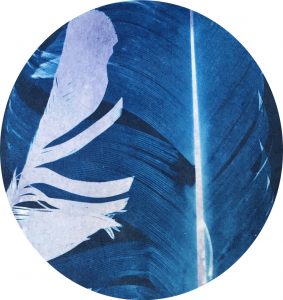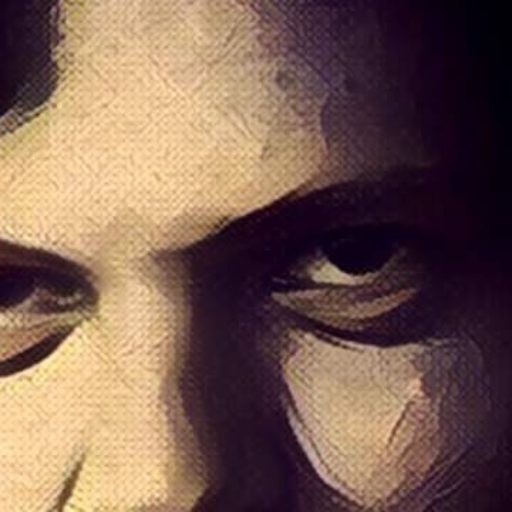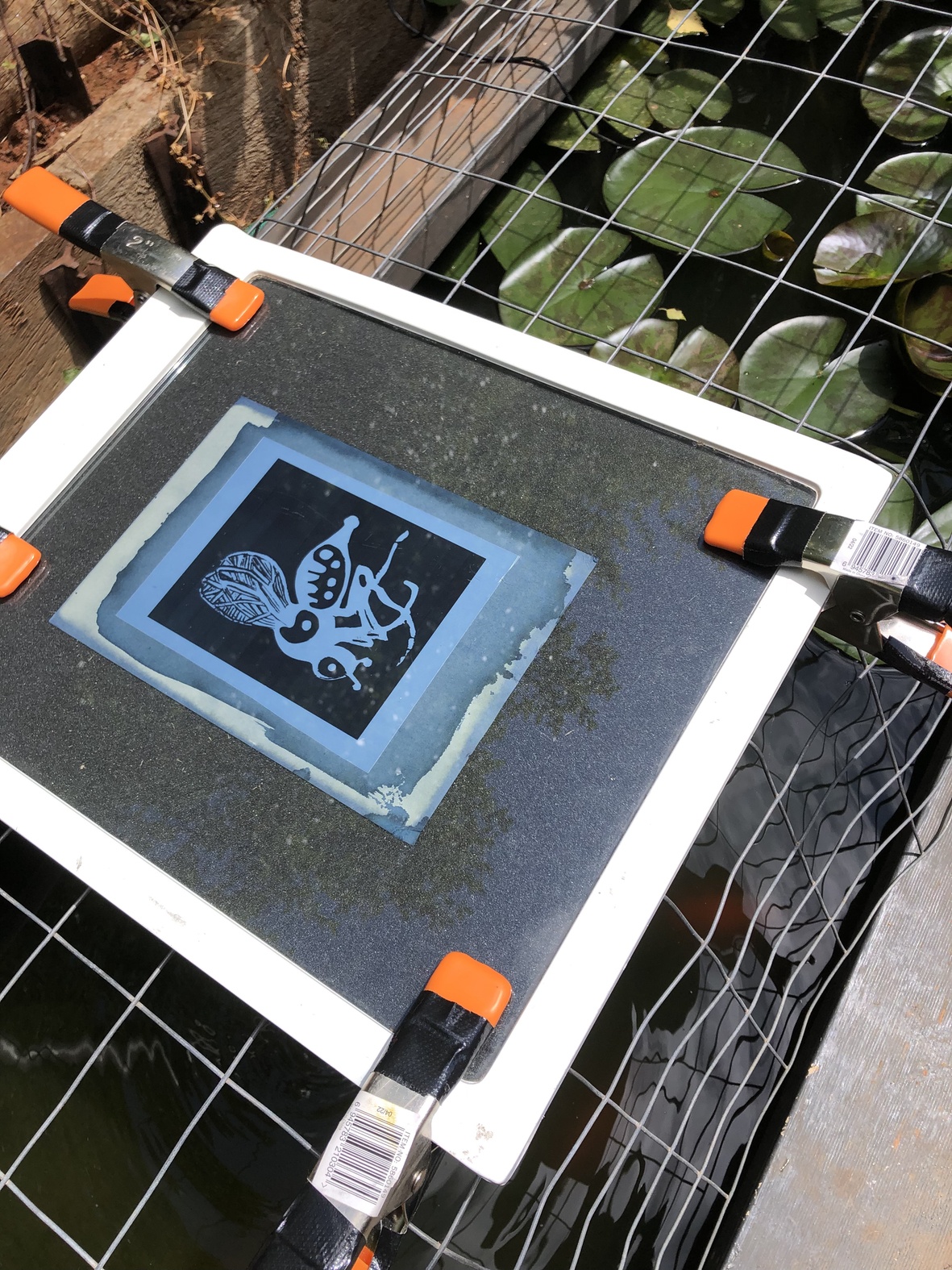The following notes outline the printing processes I’ve tried so far. I make these notes, for my own benefit, within the limitations of my technical experience with each medium. They may come back to embarrass me further down the track. I have noticed my inner voice demanding worthy content has quietened down as I experimented with each process, or maybe it’s just that I am older now and making sure I enjoy the procedural tasks before me.
My attraction to print making is the drawn line, the liberal use of dark and light with levels of tonal complexity required to suit the medium and intent of the image.
In an earlier life, I attended a print making summer school at the NGV run by Bea Maddock. As I remember, I left with a feeling of ‘why bother’ due to the lack of access to ready equipment and studio space. I believed I couldn’t achieve what I wanted without access to a vacuum table and acid handling facilities…or maybe it was other interests that took my interest. These memories no longer matter. Now in later life, with time running out, I ignore the needy cry for a vacuum table and settle down to explore the different processes by making do with what I have.
Just for starters, the worlds of photopolymer plates and drypoint etching, linocuts, monotypes, lithographs, collagraphs, cyanotypes, and chine-colle are now all there.
My new world of printing press, ink and chemistry provides opportunities to avoid settling down alone with my mind’s eye, staring at a blank sheet. However, the discipline required by the various processes rein in my impatience and at the same time keep me curious in the chance of happy accidents.
I’ve dabbled with adding colour during this learning stage. I am leaning to the simple strength of monochromatic images, rather than ones prettified by adding colours. I am not excluding colour from my palette. The painter, Peter Booth, uses minimal colours within the landscape of his monochromatic brooding figures, be they trees, dogs or people. I have enough on my hands getting used to the basics and to once gain enjoy the starkness of black and white art relying on pigment, paper and water.
I have used an old pencil and ink sketch of a wasp, that has hung around the studio for a decade or so, as the motif for this testing flurry into print making.
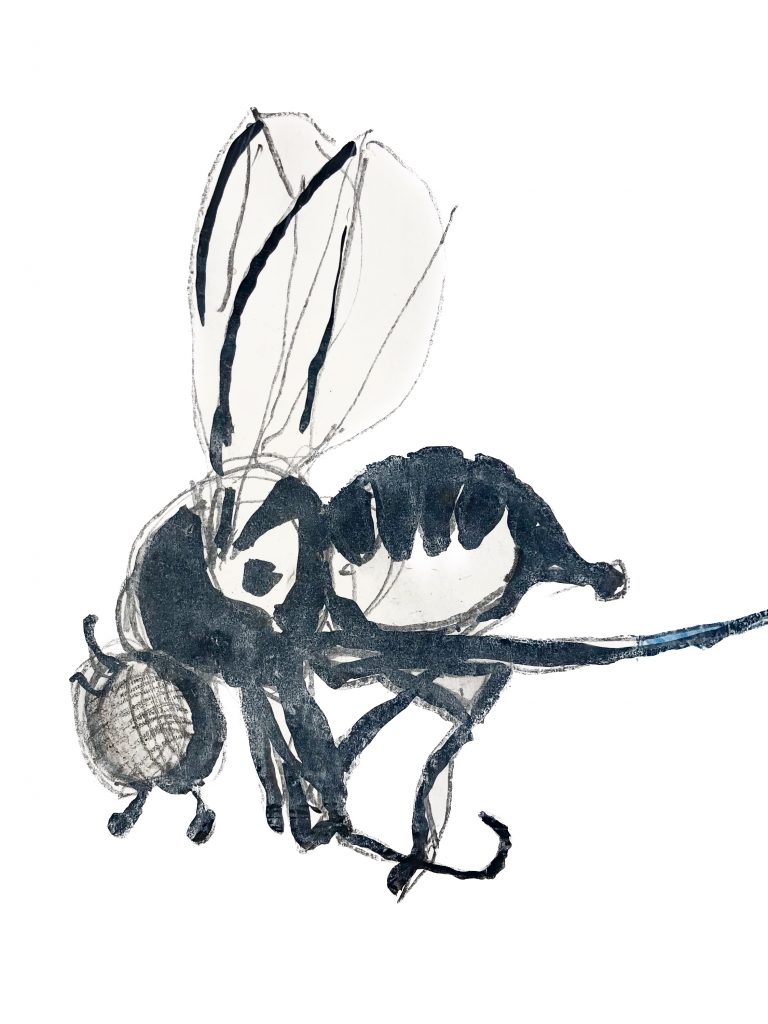
NOTES
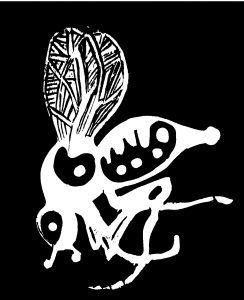
Etching -Drypoint and photopolymer
There is joy in simple line work with the choice of complexity with hatching or applied tone;
On to do list. No wasp images for drypoint-only bird images and a dog.
Photopolymer
One step removed from drypoint and acid etching that brings it closer to reproduction printing by transferring a drawing, made outside the process, to a light sensitive plate for processing to expose the etched image. Playing with exposure times to add tone and variation to the original drawing lifts this process beyond reproduction printing. It also offers creative potential for digital images outside the glass screen.
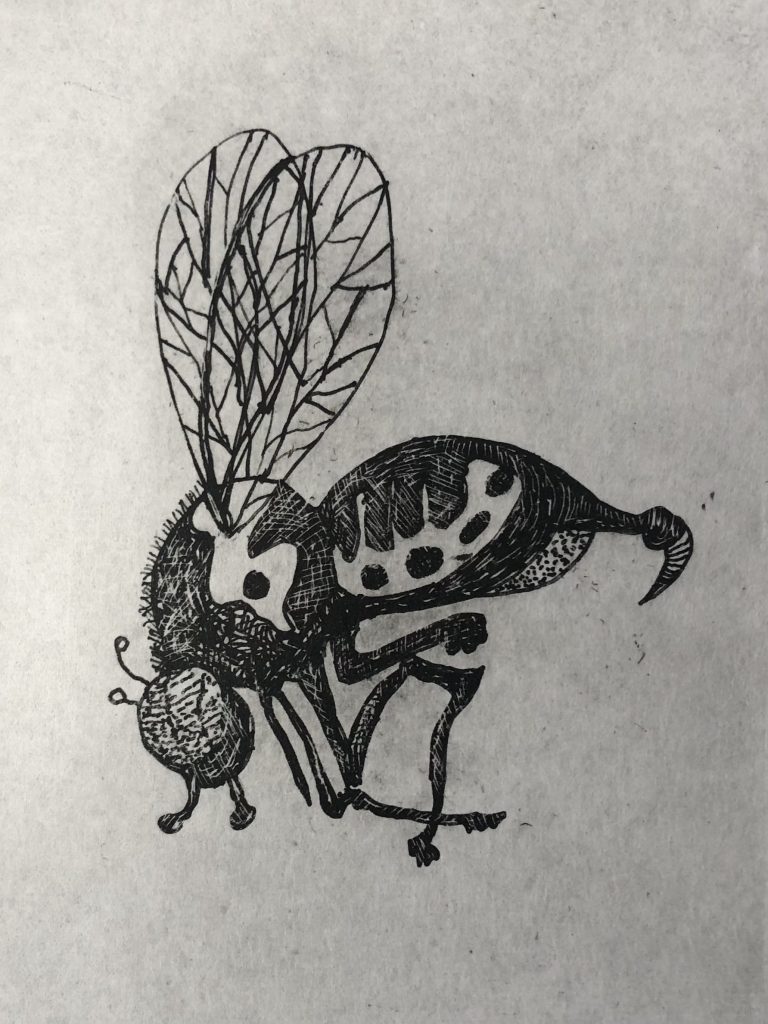
Digital printing
When can a digital print be called a unique work is an ongoing issue. Hear some thoughts on the subject.https://wigley.com.au/notes-on-reproduction-and-value/ and What defines “real” paintings and drawings?
Option 1. Giclee fine art printing offers an archival reproduction of an original work. Offers little creative flexibility within the process other than its application to 3D objects or recomposition of printed images as collage or assemblages. It enables larger scale reproduction of the original.
Option 2. I use the wet paper transfer of an ink jet print by rubbing away the paper (cellulose) transferring the pigment ink of the image to a prepared grounds of acrylic medium on paper. This can then be reworked with other media if desired to make a unique print. See also Art process
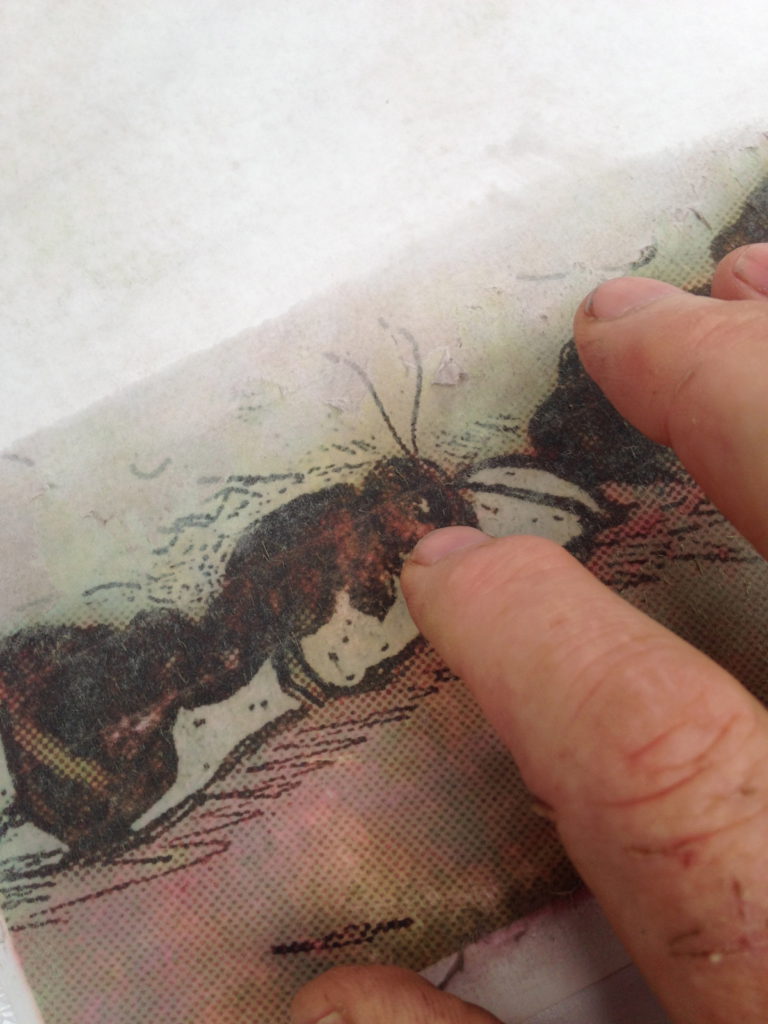
Option 3: Digital collage incorporating transparent prints layered with alternative densities.
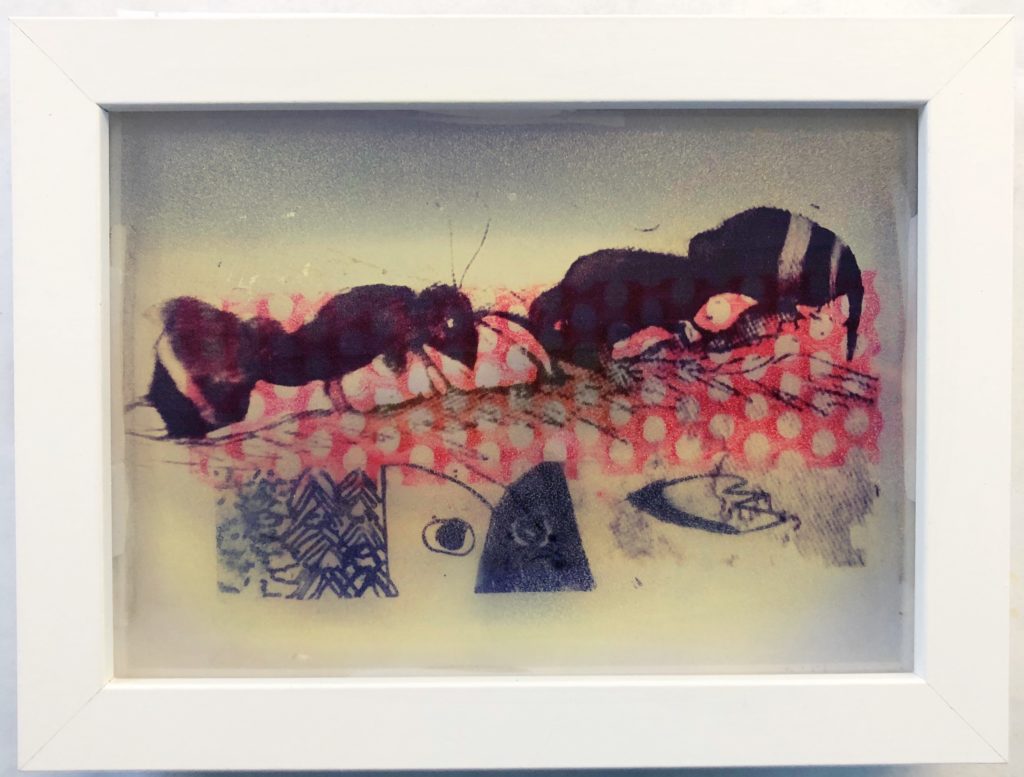
Linocuts
A medium that requires sharp strong statements relying on contrast and pared down graphic content;
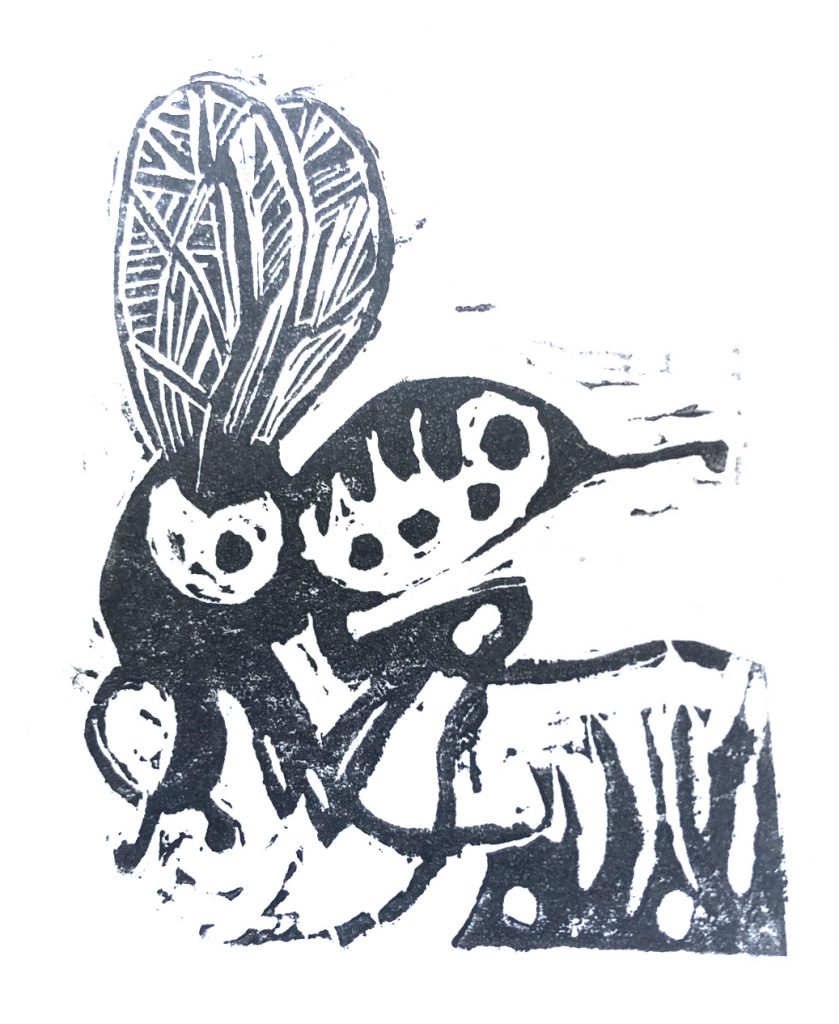
Lithography
On the to do list: Closer to reproduction than some of the other processes. I prepared a plate for an edition printed by a master printer . Grange 1979- find remaining prints and remember name.
Monotypes
A pure form of direct printing, providing unique images by drawing and painting on glass or a smooth impervious surface. Making an ink monotype is similar to finger painting on an iPad, when subtraction and erasure is used to form an image, but far more messy and dare I say it, more fun.

Monotypes are flexible, as the print can be added to and combined with other mediums including digital images.
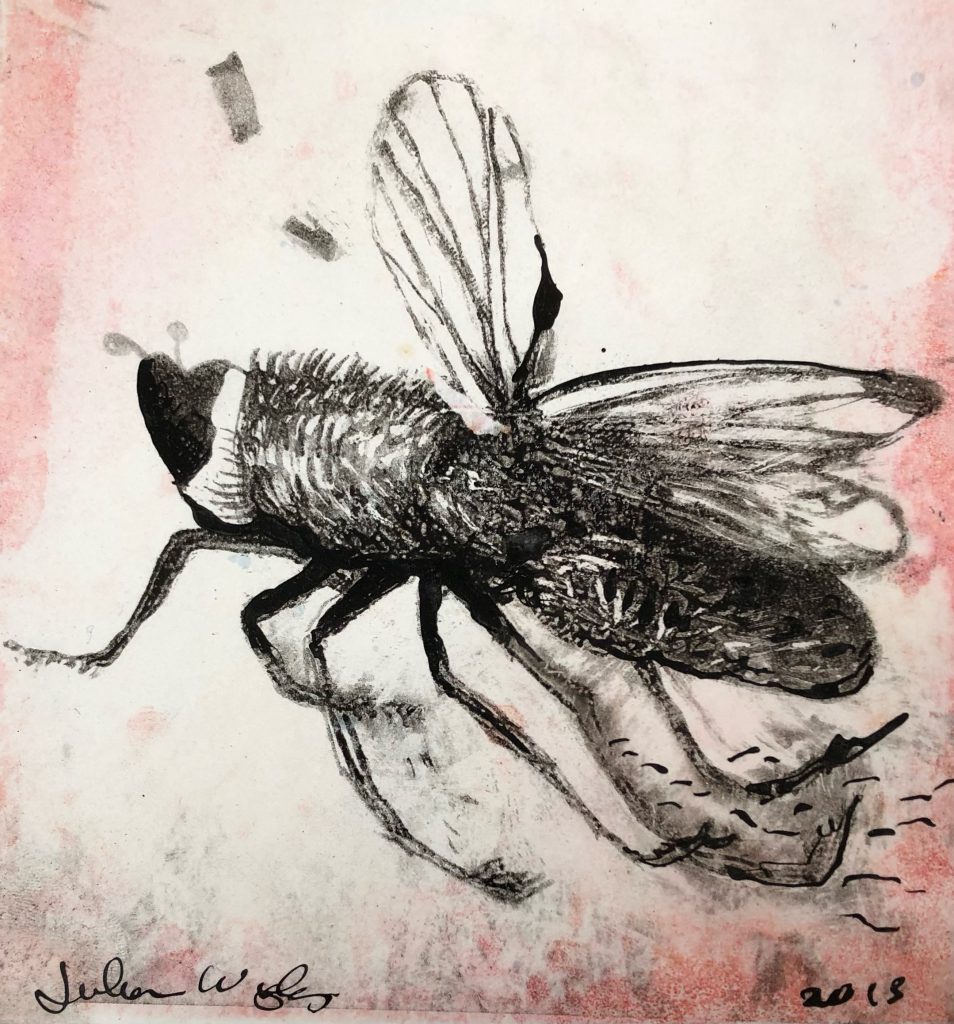
Collagraphs
On the to do list: Assembling and printing a collagraph plate offers a world of experiment not fully tried as yet.
Chine-colle
This brings together my digital iPad drawings and other printing processes. The hand made component gives this process value.
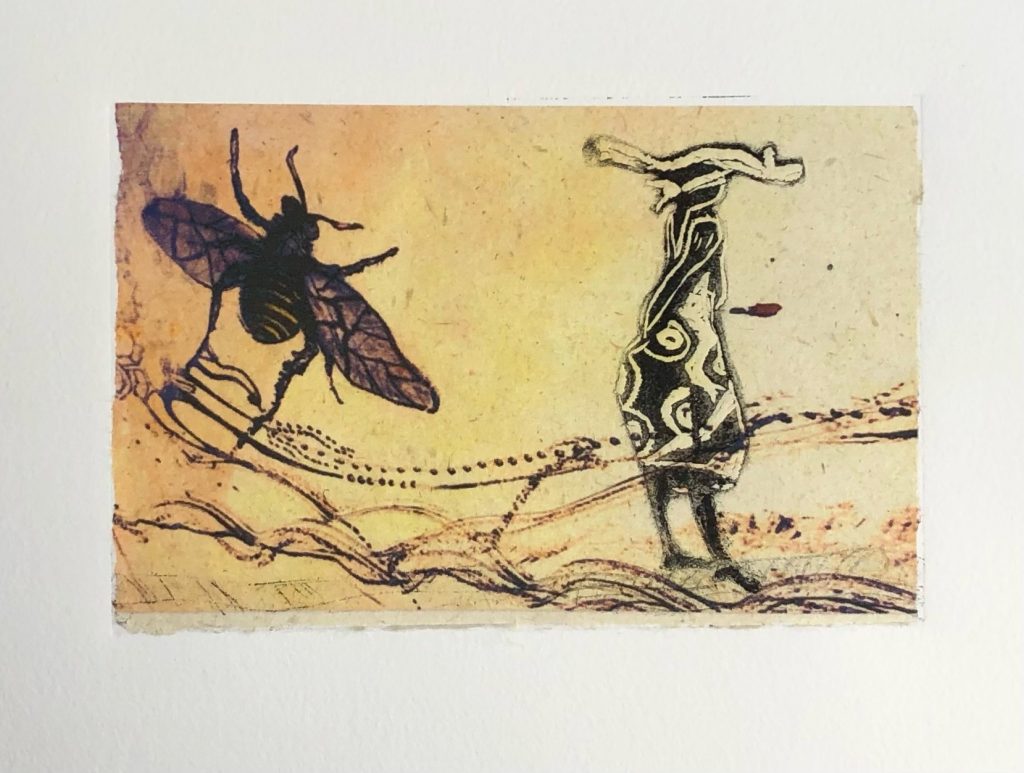
Bromoil
I have made only three bromoil images. My attraction to the process was the promise of deep tones and atmosphere encompassing an image.I thought it may be possible to work further on a drawing outside the darkroom beyond the wiping back. It is a photographic process so a darkroom is probably a requirement to achieve flexibility in further image manipulation. I classify this as a fine art reproduction printing process. Examples here .
Cyanotypes
My first attempt produced a white negative with a wonderful blue background. All is good as long as you learn from your mistakes.
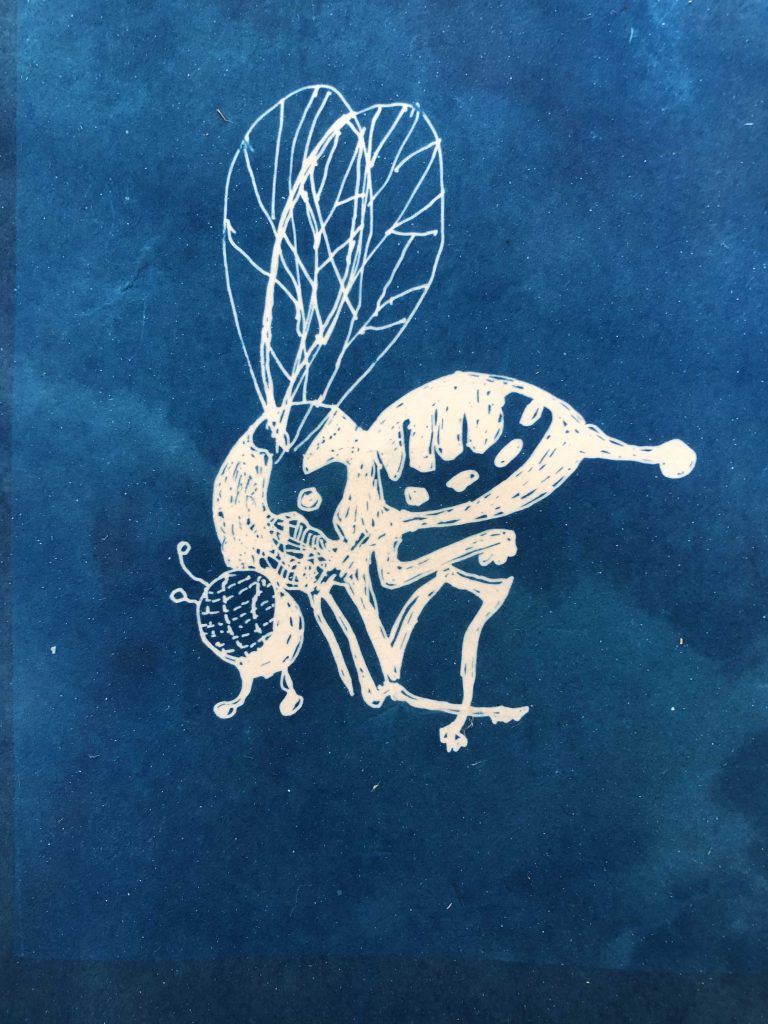
My next attempts still had the wonderful blues with variations thereof but the whites are not clear.
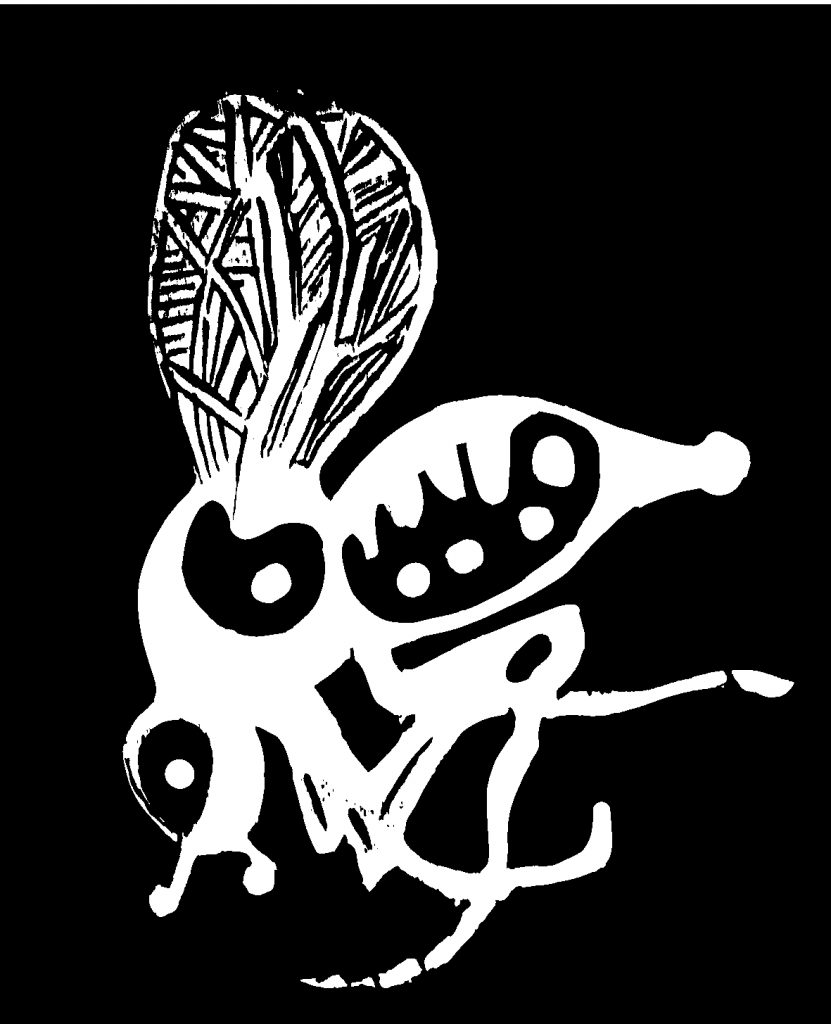
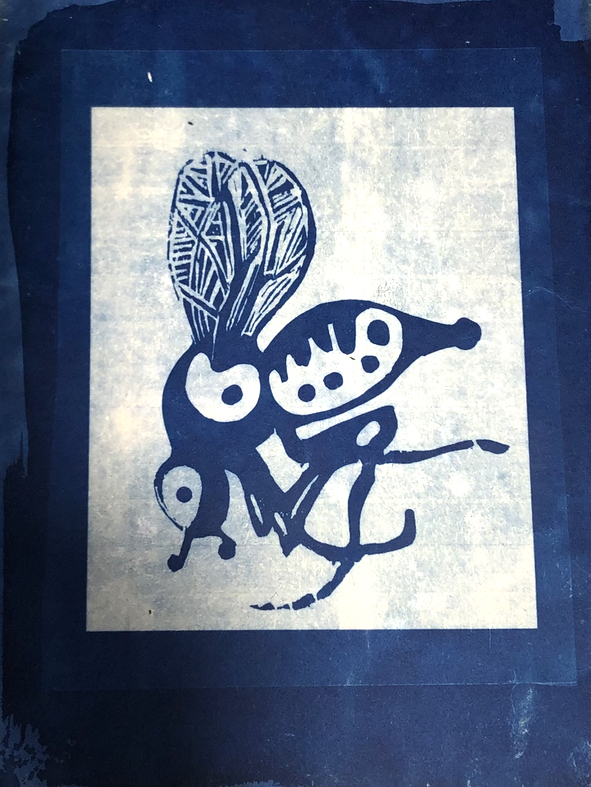
The above example is of an overexposed print reworked with undiluted bleach brushed and swabbed to whiten the wasp’s body. A slight wash was applied to the head.
I finally achieved a differentiation of white and lighter tones by exposure timing. ( Please excuse the crap quality of the photo, although I shouldn’t. The white on white worked by making the negative denser for the insect body to avoid post exposure manipulation with brush and bleach. As far as I am concerned, both approaches are legitimate if the end result works.
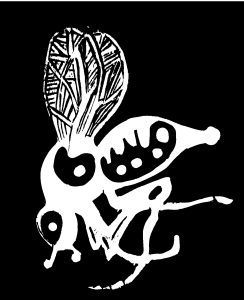
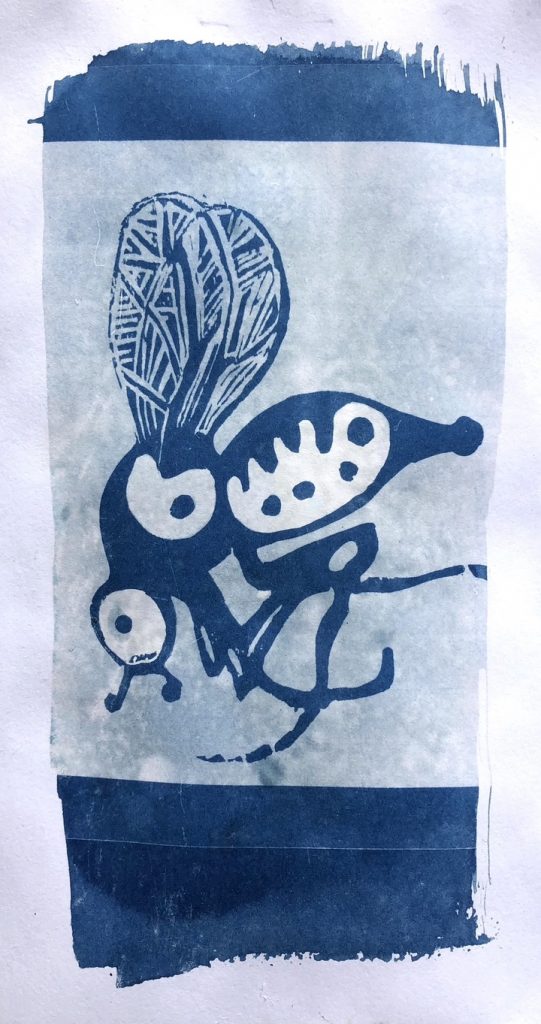
This process offers a medium beyond the ‘negative only’ photography using exposure, by reworking the print or negative with additional layers, painting, masking and toning. It is a demanding medium with more failures than happy surprises. Onwards.
Wigley’s printing rules (so far)
I started some rules so I won’t forget the basics as I blunder into this new world:
Rule 1. Think differently when drawing;
Rule 1a. Black is white and white is black; and
Rule 1b. It is a world in reverse;
Rule 2. The image better be satisfying as there could be a lot of them;
Rule 3. Don’t sweat or dribble and check your fingers are clean when handling paper; and
Rule 4. Most rules are meant to be broken* but in doing so, there is risk. *Other than Rule 3
An aside on Worthy content
At the beginning of this note I mentioned “worthy content”. So what is it?
An image of ‘worthy content’ offers surprise, sometimes hidden, always triggering feelings to challenge a viewer’s certainties. I demand this response from my own drawings…and in the main, it is how I view the work of others. Or are my drawings just decorations to a chameleon’s lair as I stare at another blank sheet? See how easy the inner critic slips in. When relying on the unconscious mind’s eye, the task of bringing an image into the conscious world runs the risk of there being nothing left to draw on other than the safe and stale.
There is a risk in relying on the unconscious mind’s eye to bring an image into the conscious world, as it may only offer what was there before. There is a benefit when this happens: You know it’s time to travel.
